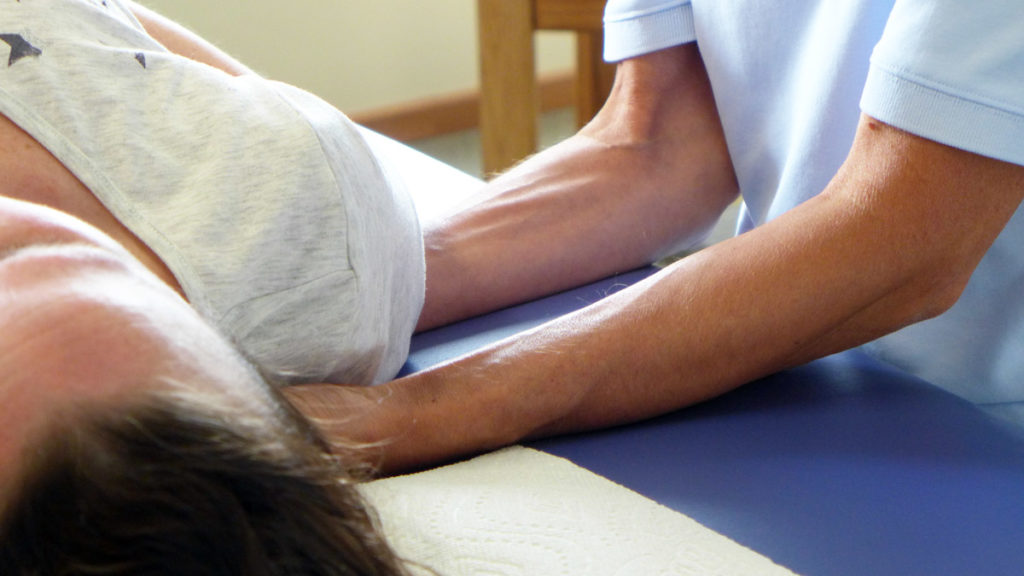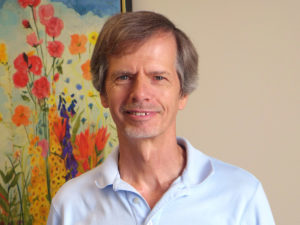What is osteopathic manipulation like?
 There are many forms of osteopathic manipulation including manipulation of the bones, soft tissue including muscles and connective tissue, nerves and internal organs, as well as the cranium. Every practitioner tends to focus on one or several of these forms. My own mix combines cranial, myofascial, neural, and visceral techniques.
There are many forms of osteopathic manipulation including manipulation of the bones, soft tissue including muscles and connective tissue, nerves and internal organs, as well as the cranium. Every practitioner tends to focus on one or several of these forms. My own mix combines cranial, myofascial, neural, and visceral techniques.
The basic underlying premise in all of these forms of manipulation as I use them is that the body is intelligent and generally knows what it needs to heal itself. A lot of my work is to listen through my hands to what the body wants to do to regain freedom and balance. The skill and the art is to have a felt sense of what is needed and what order is best in which to do things.
The work is fairly direct. You will know that you are being treated. It is relatively gentle and suitable for all ages. The youngest I have treated is a newborn moments after birth, and the oldest was close to 100. You will usually know pretty clearly after 2 to 3 sessions if I can help your condition.
Initial treatments are commonly about 40 minutes, with follow-ups typically running about 25 minutes. Spacing is commonly about 7-14 days between visits.
Richard Hruby, D.O.
Osteopathic Physician

I work with visceral and neural manipulation, using techniques developed by Jean Pierre Barral, D.O., and Alain Croibier, D.O., both French osteopaths. These techniques are especially helpful for internal organ issues and problems with nerves, nerve irritation and pain.
I went through an 800-hour training in the Feldenkrais Method®. Though I do not do dedicated Feldenkrais lessons, this way of thinking about the body informs my work every day. So often it is our habitual way of doing things that gets us in trouble. Feldenkrais was brilliant at seeing these patterns in action and teaching people to move in a different, more balanced way.
I have had a longstanding interest in diet and nutrition, having studied this area of medicine extensively since starting my practice over 35 years ago. My orientation is towards real food, meaning food that is minimally processed, with judicious supplementation where needed. All of this ties into my equally longstanding interest in functional medicine, natural hormone replacement, and exercise to promote healing.
While I make no claims about being trained in psychology, I have had a very strong interest from the beginning in how what we think and feel has effects on the body. Pain is very often connected to past physical or emotional trauma. It is often connected to habitual ways of thinking and feeling. These issues sometimes come up with work on tissues that are chronically stuck. The idea is to at least develop an awareness of the connection between how we feel emotionally and what we feel physically. They are often a single piece.
LATEST BLOG POST
- Glidewalking and the Unfortunate Effects of Sitting
Much has been made of the detrimental effects of sitting too much. As I see it, when we sit for excessive amounts of time, especially if we sit in a rounded, hunched over posture, certain muscles basically go offline. When this happens, certain other muscles are compelled to step up to give us stability.
Specifically, when we sit in a rounded posture, the low back muscles – the erectors and multifidus muscles, as well as the gluteal muscles, just stop firing as much. They lose their tone and their responsiveness. The psoas and iliacus muscles on the front side of the body tend to shorten and to overwork. These muscles are normally called into action when we need extra stability between the trunk and the legs, as when we are lifting, pushing, pulling, or reaching. If they become chronically tight because they are providing stability normally provided by the butt and back muscles, this can lead to some low back and sacroiliac pain.
Several solutions to this issue become evident. When you sit, sit up, with your back in a small arch, with shoulders back and down. When you stand, do the same. Avoid looking down excessively at your phone. There is a type of walking which I really like called “glidewalking,” a term from Esther Gokhale, a posture educator. You can check out Gokhale and glidewalking on YouTube. The essence of it is that as you walk, you let your back leg extend back enough that you feel a small grip in your buttocks as your gluteal muscles engage. This will really wake up this whole side of the postural complex. Esther Gokhale’s book, 8 Steps To A Pain Free Back is a beautiful book that talks about many aspects of posture. The pictures are beautiful and the discussion is very helpful.
Contact Us
We are typically open Monday to Friday from 8AM until 4PM. For questions and appointment requests, please contact our office at:
(952) 920-0844
FREQUENTLY ASKED QUESTIONS
Click the Read More button at the bottom to see the full F.A.Q.
Order Supplements
Emerson is a wholesale supplement company that carries many quality brands. The brands that I used to carry in the office are listed first. Many other supplements are available. There is a handful of supplements that I carried before that are not available on the website. If you want to get any of these, please call the office.
It is easy to set up an account with Fullscript (formerly known as Wellevate), the online website to order supplements from Emerson Ecologics. To visit their website, click here or on the image at left. You will be asked to log in. Click there and you can fill out your contact information and then order your supplements.
There is a significant discount on orders. Please note that some of the supplements may be available at a lower cost at other sites online.
As always, it is always best to work with someone knowledgeable in the use of supplements so that you can keep your body in balance.

